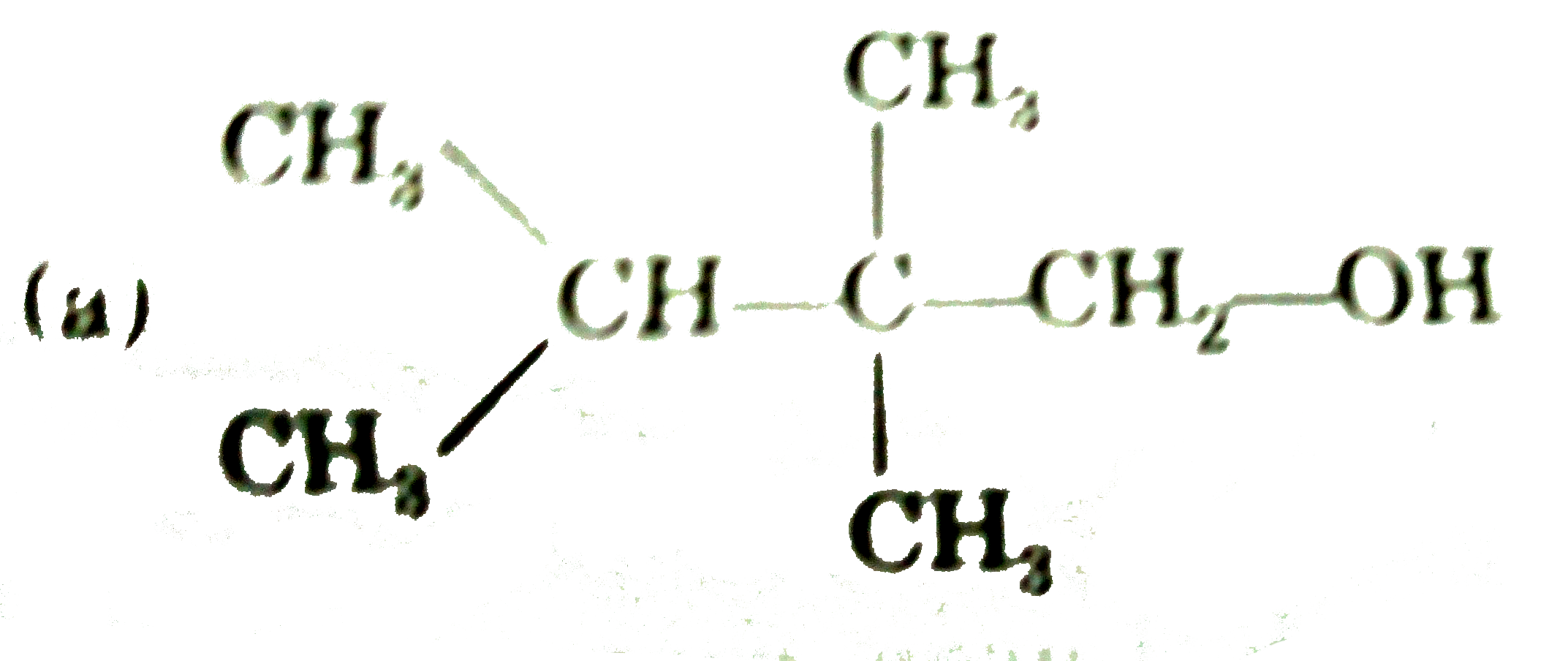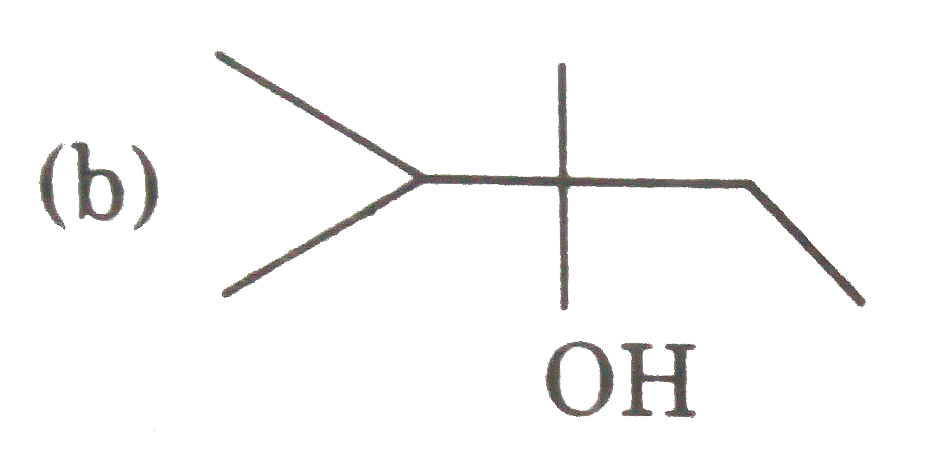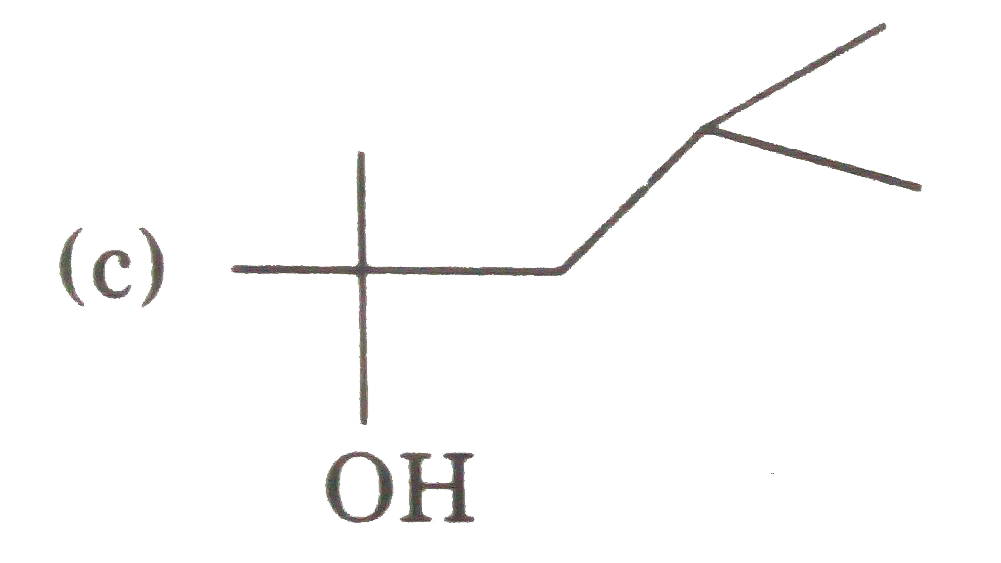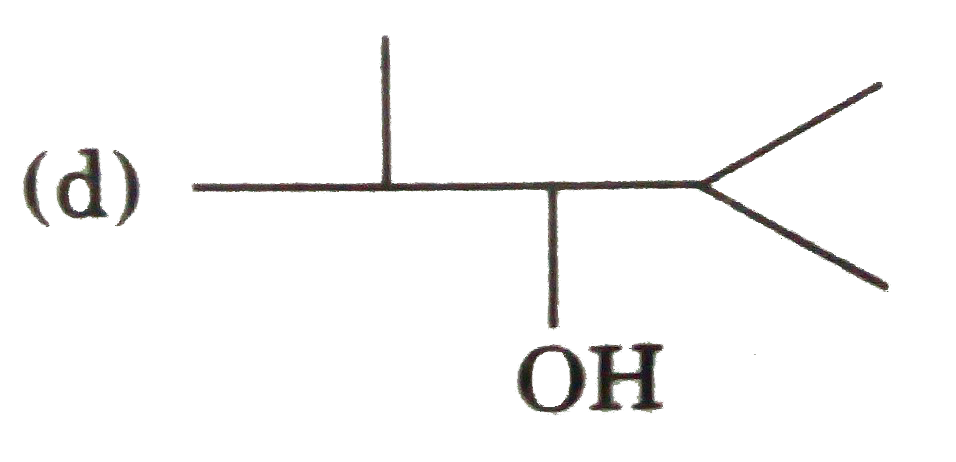CH3−CH∣CH3−CH3∣C∣CH3−CH2BrNaOH−−−−−−→HOH
Consider the following statement for the given reaction
1. The reaction is SN1
2. The reaction intermediate is carbocation
3. The major product will be 2,3-dimethyl-3-pentanol
4. The major product has one stereogenic centre
1,2 and 3 are correct
2,3 and 4 are correct
1,2,3 and 4 are correct
1,3 and 4 are correct
The correct Answer is:C
To solve the given problem, we will analyze the hydrolysis of the haloalkane step by step and evaluate the provided statements.
Step 1: Identify the Reaction
The reaction involves the hydrolysis of a haloalkane (specifically, a bromoalkane). The structure given is CH3-CH(CH3)-C(CH3)-CH2Br. The reaction is performed in the presence of water (H2O) and sodium hydroxide (NaOH).
Hint: Hydrolysis of haloalkanes typically involves the substitution of the halogen (Br in this case) with a hydroxyl group (OH).
Step 2: Determine the Mechanism
The mechanism of the reaction can be either SN1 or SN2. In this case, we have a tertiary carbon (due to the presence of three alkyl groups attached to the carbon bearing the Br). Tertiary haloalkanes generally favor the SN1 mechanism due to steric hindrance.
Hint: Remember that primary haloalkanes typically follow the SN2 mechanism, while tertiary haloalkanes follow the SN1 mechanism.
Step 3: Formation of Carbocation
In the SN1 mechanism, the first step is the formation of a carbocation after the leaving group (Br) departs. The leaving of Br generates a carbocation intermediate. Since the starting haloalkane is tertiary, the carbocation formed will be stable.
Hint: The stability of carbocations increases with the number of alkyl groups attached to the positively charged carbon.
Step 4: Carbocation Rearrangement
After the formation of the carbocation, if it is a 1-degree carbocation, it may undergo rearrangement to form a more stable carbocation. In this case, a methyl shift occurs, converting the 1-degree carbocation into a more stable 3-degree carbocation.
Hint: Look for possible rearrangements that lead to more stable carbocations.
Step 5: Nucleophilic Attack
The next step involves the nucleophile (water in this case) attacking the carbocation. The oxygen in water has lone pairs and can act as a nucleophile, forming an alcohol.
Hint: The nucleophile will attack the positively charged carbon to form the alcohol.
Step 6: Final Product Formation
After the nucleophilic attack, the final product is formed by deprotonation of the hydroxyl group. The resulting compound is 2,3-dimethyl-3-pentanol.
Hint: Make sure to account for all groups attached to the final product to confirm its structure.
Step 7: Evaluate the Statements
1. The reaction is SN1 - Correct, as discussed.
2. The reaction intermediate is carbocation - Correct, as the carbocation is formed during the reaction.
3. The major product will be 2,3-dimethyl-3-pentanol - Correct, as we derived this product.
4. The major product has one stereogenic center - Correct, as the carbon with the hydroxyl group is a chiral center.
Conclusion
All four statements are correct.
Final Answer: All statements (1, 2, 3, and 4) are correct.
The reaction involves the hydrolysis of a haloalkane (specifically, a bromoalkane). The structure given is CH3-CH(CH3)-C(CH3)-CH2Br. The reaction is performed in the presence of water (H2O) and sodium hydroxide (NaOH).
The mechanism of the reaction can be either SN1 or SN2. In this case, we have a tertiary carbon (due to the presence of three alkyl groups attached to the carbon bearing the Br). Tertiary haloalkanes generally favor the SN1 mechanism due to steric hindrance.
In the SN1 mechanism, the first step is the formation of a carbocation after the leaving group (Br) departs. The leaving of Br generates a carbocation intermediate. Since the starting haloalkane is tertiary, the carbocation formed will be stable.
After the formation of the carbocation, if it is a 1-degree carbocation, it may undergo rearrangement to form a more stable carbocation. In this case, a methyl shift occurs, converting the 1-degree carbocation into a more stable 3-degree carbocation.
The next step involves the nucleophile (water in this case) attacking the carbocation. The oxygen in water has lone pairs and can act as a nucleophile, forming an alcohol.
After the nucleophilic attack, the final product is formed by deprotonation of the hydroxyl group. The resulting compound is 2,3-dimethyl-3-pentanol.
1. The reaction is SN1 - Correct, as discussed.
2. The reaction intermediate is carbocation - Correct, as the carbocation is formed during the reaction.
3. The major product will be 2,3-dimethyl-3-pentanol - Correct, as we derived this product.
4. The major product has one stereogenic center - Correct, as the carbon with the hydroxyl group is a chiral center.
All four statements are correct.
Topper's Solved these Questions
Similar Questions
Knowledge Check
CH3−CH∣CH3−Cl∣C∣H−CH3CH3OH−−−−→ major product is
ACH3−CH∣CH3−OCH3∣CH−CH3BCH3−OCH3∣C∣CH3−CH2−CH3CCH3−C∣CH3=CH−CH3DCH3−CH∣CH3−CH=CH2CH3−C∣CH3H−CH3∣C∣CH3−CH2−NH2HNO2−−−→X(major)
Major product of above reaction is :A B
B C
C D
D
In the given reaction CH3−CH3∣C∣CH3−CH2−BrΔ−−→[X]
[X] will beACH3−CH∣CH3−CH=CH2BCH3−C∣CH3=CH−CH3CCH3−CH=CH−CH3DCH3−CH2−CH=CH2
CH3−C∣BrH−CH2−O∣∣C−CH3N2H4,ӨOH−−−−−→Δ product :
View SolutionCH3−CH3∣C∣CH3−C∣BrH−CH3El mechanism−−−−−−−−−−→Δ(A)
Major product (A) is
View SolutionCH3−CH3∣C∣CH3−C∣BrH−CH3nderset(Δ)EtOH−−−→(A)
Major product (A) is:
View SolutionIn this reaction CH3−CH3∣C∣Br−CH2−CH3C2H5ONa−−−−−→Alcoholic
View SolutionCH3−CH∣CH3−CH3+Br2−−→hv(A) . (Major) . A will be
View Solution
